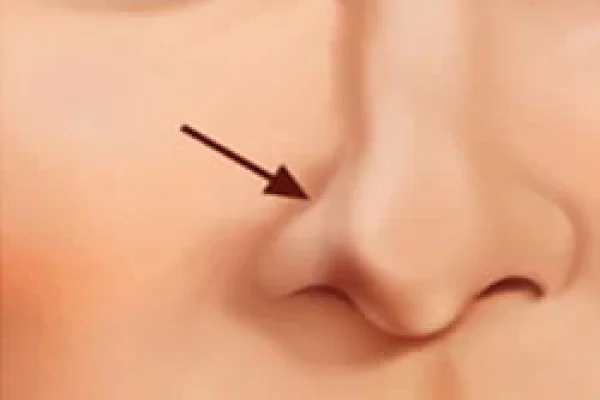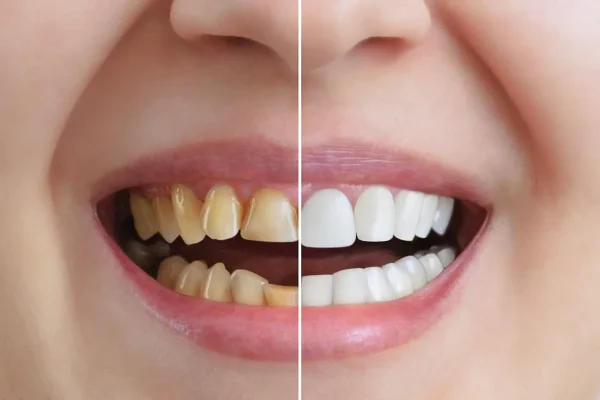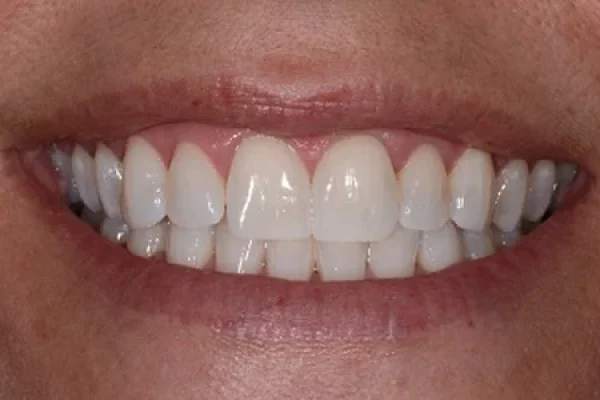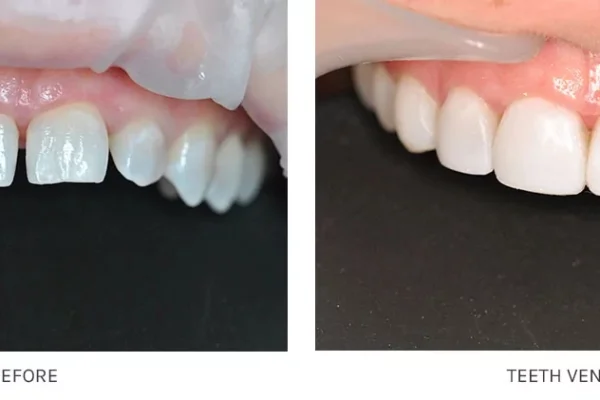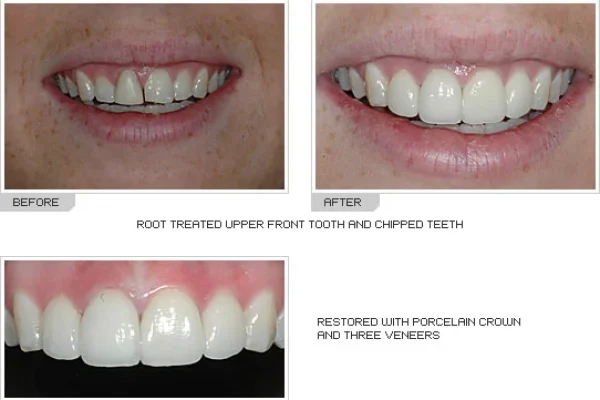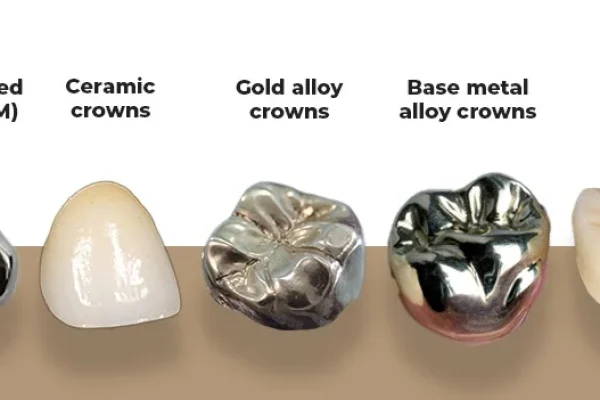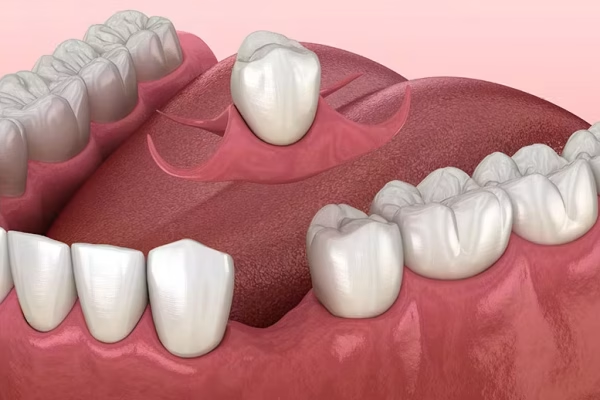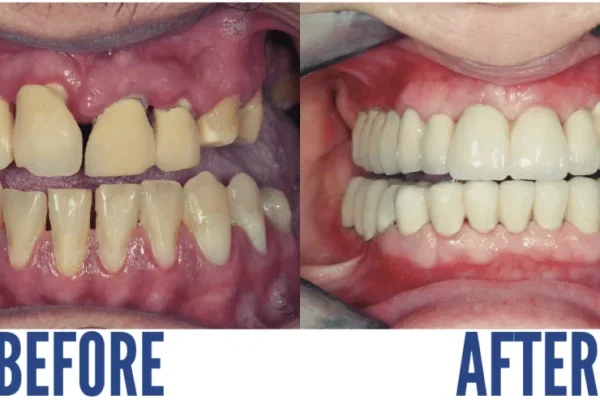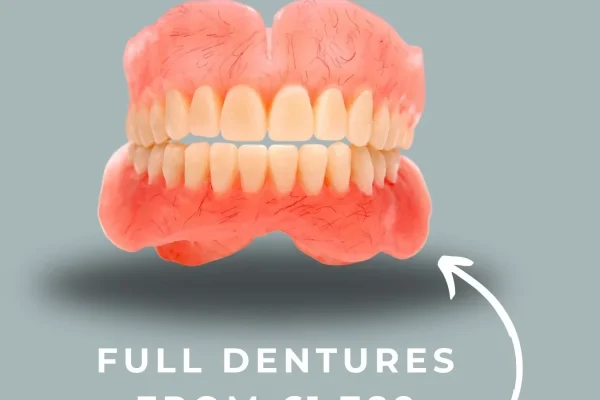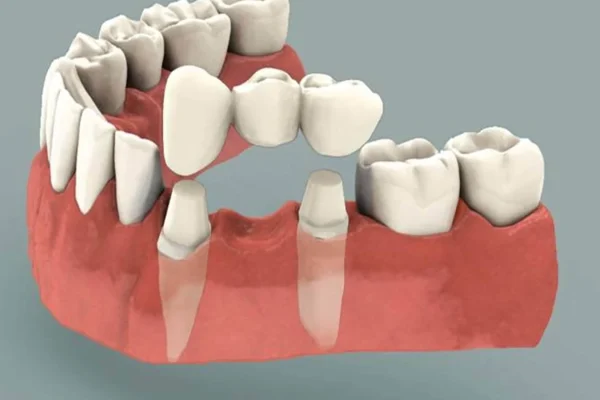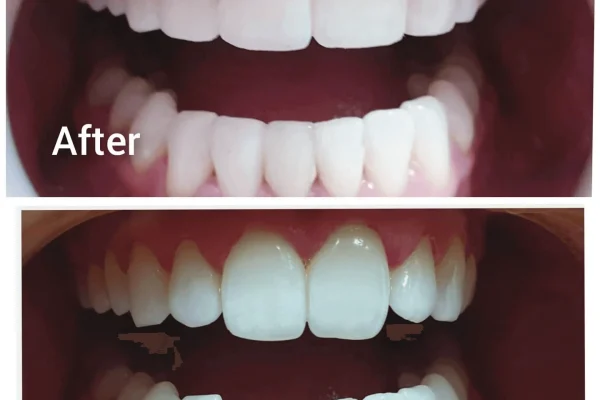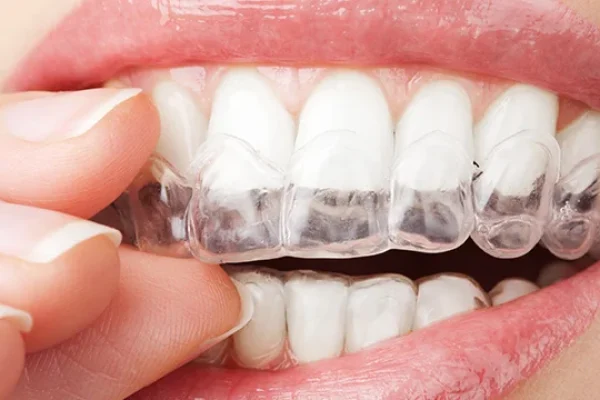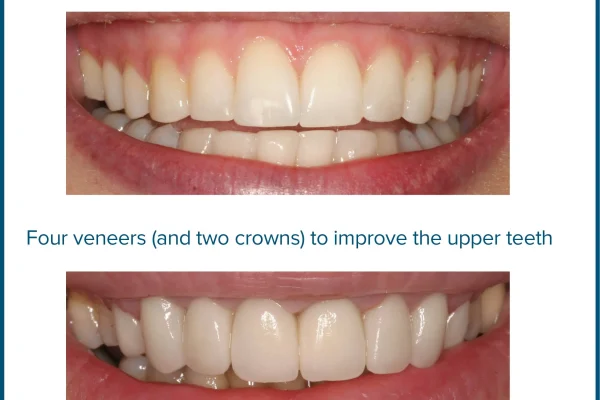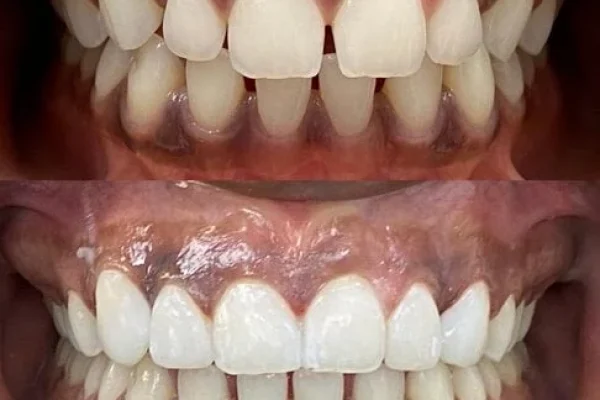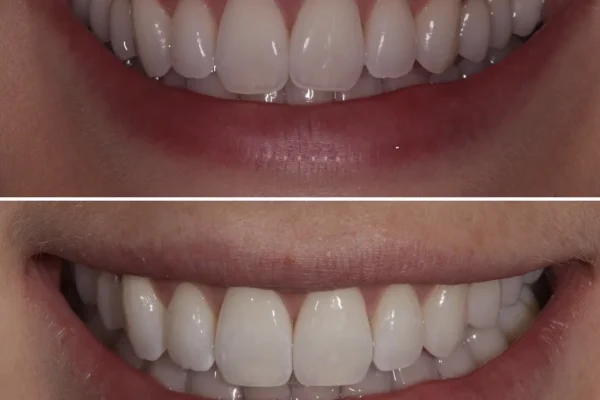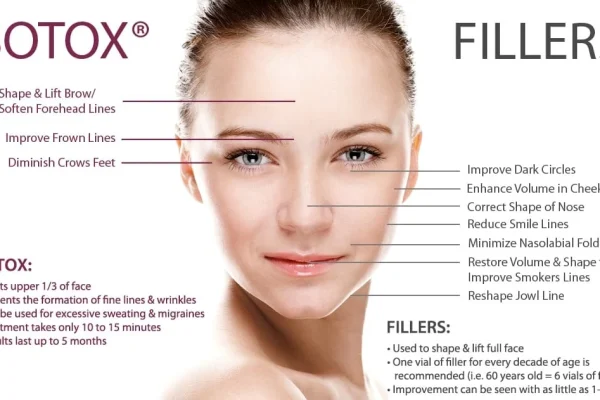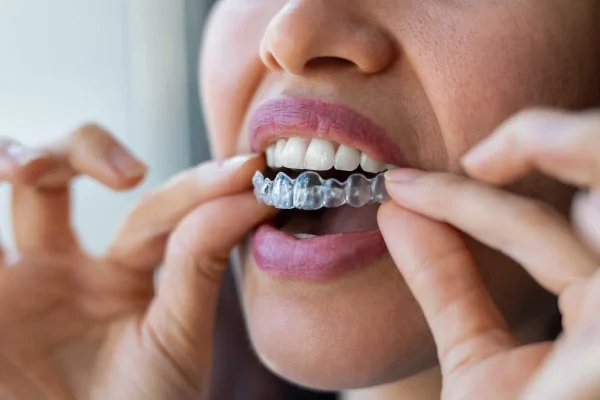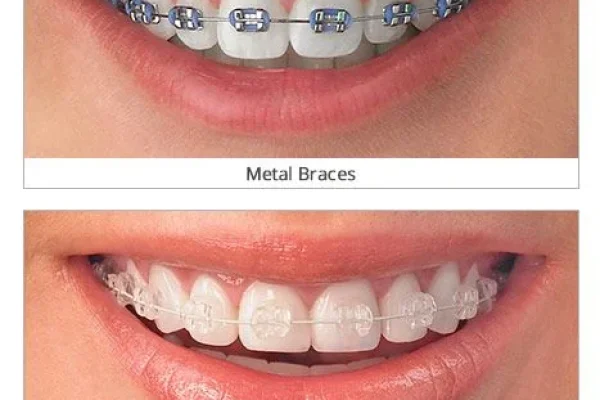
Key Takeaways
- Adhere to the 4-hour upright rule post-Botox to prevent migration.
- Avoid alcohol for at least 24-48 hours after treatment to minimize bruising.
- Refrain from strenuous exercise for at least 24 hours to prevent swelling and Botox dispersal.
- Listen to your practitioner’s specific aftercare instructions as they are tailored to your treatment.
- Do not rub or massage treated areas to keep Botox localized for optimal results.
Alright, let’s get those post-Botox queries smoothed out with the finesse they deserve. You’ve made the leap, invested in that sprinkle of rejuvenation (often part of a broader approach to cosmetic dentistry), and now? Now comes the equally crucial part: the aftercare. Think of it as protecting your investment, ensuring those subtle, artful tweaks deliver the stellar results you’re anticipating. Mess this bit up, and you might as well have spent your money on a particularly uninspiring beige jumper.
Here’s SPARKLE’s definitive guide to navigating the post-Botox landscape like a seasoned pro. We’ll delve into the whys, the wherefores, and the “oh-dear-god-don’t-do-thats” with the kind of detail that leaves no wrinkle unaddressed, figuratively speaking, of course.
Botox Aftercare: Your Ultimate Guide to Maximizing Results and Ensuring Safety
So, you’ve embraced the magic of Botulinum Toxin Type A, a treatment that’s less about chasing eternal youth and more about looking like the best, most refreshed version of yourself. Botox, in the hands of a skilled practitioner, is an art form. It’s the subtle whisper of “I woke up like this,” rather than a shout. But the masterpiece isn’t quite finished when you step out of the clinic. The immediate aftermath, those crucial first hours and days, plays a monumental role in how beautifully those results will unfold and, importantly, how long they’ll stick around to grace your visage. Consider this your comprehensive playbook, your post-procedure bible, meticulously crafted to ensure your journey to smoother skin is, well, smooth.
The importance of diligent aftercare cannot be overstated. It’s the silent partner to your practitioner’s skill. Proper adherence to these guidelines is your first line of defense against unwanted side effects – think less “enigmatic allure” and more “surprisingly quizzical eyebrow.” It’s about minimizing the chances of bruising that could rival a Jackson Pollock, reducing swelling that might have you reaching for oversized sunglasses for all the wrong reasons, and, critically, preventing the Botox from migrating to areas where it simply wasn’t invited. Like a gatecrasher at an exclusive party, migrated Botox can cause effects like a droopy eyelid, which, let’s be frank, is nobody’s aesthetic goal. Furthermore, conscientious aftercare helps the neurotoxin settle precisely where it’s intended, allowing it to work its muscle-relaxing wonders effectively, ensuring you get the full benefit and longevity from your treatment. This article will walk you through every critical step, from the immediate “don’ts” to long-term strategies for making those results sing. We’ll cover the golden rules, the common pitfalls, and answer those burning questions that pop up when you’re meticulously examining your reflection. Prepare to become a Botox aftercare aficionado.
What is the Best Botox Aftercare? A Comprehensive Guide to Post-Treatment Success
Navigating the world of post-Botox care might initially seem like tiptoeing through a minefield of “don’ts,” but in reality, it’s about a few core principles designed to let the treatment work its magic unimpeded. The “best” aftercare isn’t a secret elixir or a complicated ritual; it’s a symphony of sensible precautions and gentle handling. The fundamental goals are refreshingly straightforward: firstly, to prevent the freshly injected Botox from migrating from its targeted muscles to adjacent areas. This is paramount because if the product wanders, it can lead to unintended muscle relaxation, resulting in effects like eyelid ptosis (a droopy eyelid) or an asymmetrical facial expression – not quite the refined look you were aiming for. Secondly, proper aftercare aims to significantly reduce the likelihood and severity of common, albeit temporary, side effects such as swelling and bruising at the injection sites. While some minor reaction is normal, careful aftercare can keep this to an absolute minimum, allowing you to return to your social calendar with confidence. Finally, it’s about allowing the neurotoxin the optimal environment to bind to the nerve receptors in the muscles, a process that takes a little time and is best achieved without undue disturbance.
Crucially, while this guide offers comprehensive advice, the platinum rule of Botox aftercare is to listen to your practitioner. They are your aesthetic oracle. They’ve assessed your unique facial anatomy, understand the specifics of your treatment – the dosage, the injection points – and will provide tailored instructions based on your individual needs and the areas treated. Think of their advice as bespoke tailoring for your face; it’s designed to fit you perfectly. This might include specific recommendations about skincare products, activities to modify, or signs to watch out for. If their advice differs slightly from general guidelines, always defer to their expertise. They might, for instance, have a preferred protocol for applying cold compresses or specific timelines for resuming certain activities based on their clinical experience and the techniques they’ve employed. So, while we’re about to dive deep into the general recommendations – covering everything from activities to avoid in those initial hours, to the nuances of your skincare routine, and how to manage any mild side effects that might arise – remember that your provider’s word is gospel. They are your partner in achieving and maintaining those beautifully smooth results.
What Are the Critical “Don’ts” Immediately Following Your Botox Treatment?
The ink is barely dry on your consent form, the subtle prick of the needle is a fresh memory, and now the real work begins – yours! Immediately following your Botox treatment, there’s a golden window where your actions (or inactions) can profoundly influence the outcome. Think of this period as the delicate setting phase for a precious jewel; you wouldn’t jiggle it, would you? So, let’s talk about the universal “don’ts,” the actions you should consciously avoid to safeguard your investment and steer clear of preventable hiccups. First and foremost, resist the urge to touch, rub, massage, or apply any form of significant pressure to the treated areas for at least 24 hours, though some practitioners might advise even longer. This includes avoiding vigorous scrubbing when washing your face or pressing your face firmly into a massage cradle. Why the hands-off approach? Because physical manipulation can inadvertently encourage the Botox to spread beyond its intended muscular targets. Imagine gently placing a drop of ink on blotting paper; you want it to stay put, not be smudged across the page.
The reasoning behind these restrictions is beautifully simple: it’s all about precision and stability. Botox works by temporarily blocking nerve signals to specific muscles, causing them to relax. If the product migrates to nearby, unintended muscles, you could experience a range of unwelcome effects, from a droopy eyelid if forehead injections spread downwards, to an altered smile if treatment around the mouth goes astray. Strenuous exercise is another major “don’t” for at least the first 24 hours. Increased blood flow from a heart-pumping workout can not only exacerbate bruising and swelling but also theoretically increase the risk of the Botox diffusing away from the injection sites. Similarly, activities that involve significant heat exposure, such as saunas, steam rooms, hot tubs, or even very hot showers, should be postponed. Heat causes vasodilation (widening of blood vessels), which can also contribute to swelling and potentially affect how the Botox settles. Common mistakes people often make include immediately lying down flat (violating the upright rule we’ll discuss next), having a vigorous facial massage thinking it will “help it settle” (it won’t, it’ll do the opposite), or hitting the gym for an intense session. Steering clear of these pitfalls is your passport to a smoother, complication-free result.
Why Is Adhering to the 4-Hour Upright Rule So Crucial Post-Injection?
Among the commandments of Botox aftercare, the “4-hour upright rule” holds a place of particular reverence, and for very good reason. It’s a simple directive with significant implications for the success of your treatment. So, what exactly does it entail? The rule dictates that for a minimum of four hours immediately following your Botox injections, you should remain in an upright position. This means no lying down flat, whether for a nap on the sofa or an early bedtime. It also means avoiding activities that involve bending forward excessively or positioning your head below your heart for any extended period. Think of activities like tying your shoelaces (do it carefully or get someone else to!), picking up dropped items from the floor (bend at the knees, not the waist, if you absolutely must), certain yoga positions (downward dog is definitely out), or even prolonged periods spent looking down at your phone or laptop with your head heavily flexed. While a slight tilt of the head is generally fine, the emphasis is on avoiding significant or sustained inversion or horizontal positioning. Some practitioners might even suggest a slightly longer period, perhaps up to six hours, so always clarify this with your provider.
The science behind this rule is primarily concerned with preventing the migration of Botox. When Botox is injected, it’s placed into very specific muscles. In the initial hours, before it fully binds to the nerve receptors it’s targeting, it’s theoretically more susceptible to being influenced by gravity and pressure. If you lie down or bend over extensively, gravity could potentially encourage the solution to track along fascial planes or diffuse into adjacent, unintended muscles. The most commonly cited example of such unwanted migration is the dreaded eyelid ptosis, or droopy eyelid. This can occur if Botox intended for the forehead muscles (like the frontalis) or the glabellar complex (the “11s” between the brows) seeps downwards into the levator palpebrae superioris muscle, which is responsible for lifting the upper eyelid. The result? A heavy, sleepy-looking eyelid that can take weeks or even months to resolve as the Botox naturally wears off. By staying upright, you allow gravity to work with you, helping to keep the Botox localized within the targeted areas as it begins the crucial process of binding to the muscle receptors. Activities to consciously avoid during this four-hour window include: taking a nap, receiving a massage that requires you to lie flat, extensive gardening or housework that involves a lot of bending, and, as mentioned, certain exercise postures. It’s a small sacrifice in time for a significantly reduced risk of complications.
Should You Avoid Touching, Massaging, or Making Excessive Facial Movements After Botox?
Once those tiny needles have delivered their potent cargo, the golden rule is simple: hands off! It might seem intuitive to want to “rub it in” or check the area, but resist this temptation with all your might, particularly for the first 24 to 48 hours. Your practitioner has meticulously placed the Botox in precise locations to achieve a specific aesthetic outcome. Any undue rubbing, massaging, or firm pressure applied to the treated zones carries a real risk of physically displacing the product. Think of it like a delicate watercolour painting before it dries; a careless smudge can ruin the artist’s intention. When you massage an area where Botox has been injected, you’re essentially encouraging it to spread beyond the targeted muscle fibers. This can lead to the Botox affecting adjacent muscles that you don’t want relaxed, potentially causing asymmetry, unwanted weakness in nearby expressions, or, as previously discussed, issues like eyelid or brow drooping if the product migrates downwards from forehead or glabellar treatments. Even actions like wearing tight-fitting hats, headbands, or goggles that press firmly on treated areas should be avoided in the initial period.
The risk of spreading is highest in the first few hours and days before the Botox has fully bound to the nerve endings. This binding process is crucial for its efficacy and for keeping it localized. Physical manipulation can disrupt this delicate settling-in phase. Now, what about facial movements? This is where a little nuance comes in. While you should definitely avoid exaggerated or forceful facial expressions – no dramatic gasping, over-the-top frowning, or excessive face-scrunching contests for the first day or so – gentle, normal facial movements are generally considered fine and, by some practitioners, even encouraged. Light, natural movements, like gentle smiling or raising your eyebrows (if not the target area), can theoretically help the Botox be taken up by the targeted muscles. However, the key word here is “gentle.” The aim is to avoid any movement that puts undue strain or pressure on the injection sites or involves vigorous contraction of muscles adjacent to the treated ones. It’s a delicate balance: live your life, but perhaps postpone your audition for a mime troupe or practicing your most dramatic surprised face in the mirror for a day or two. Your face will thank you for the gentle consideration.
When Should You Contact Your Doctor About Post-Botox Concerns or Complications?
While Botox is widely regarded as a safe procedure with a low risk of serious complications, especially when administered by a qualified and experienced medical professional, it’s essential to be attuned to your body and know when a post-treatment symptom warrants more than just a watchful eye. Understanding the difference between normal, expected side effects and those that signal something more concerning is key. Common, mild, and temporary side effects are par for the course for many. These can include slight redness, pinpoint bruising, small bumps, or a bit of tenderness at the injection sites. Some individuals might experience a mild headache, particularly after forehead injections, which usually resolves within a day or two with simple pain relief. These are generally nothing to fret about and typically subside on their own. However, your vigilance shouldn’t end there. There are specific signs and symptoms that absolutely necessitate a call to your healthcare provider.
These red-flag symptoms include, but are not limited to: any signs of a developing allergic reaction, such as hives, rash, itching, difficulty breathing, or swelling of the face, lips, tongue, or throat – these require immediate medical attention. Significant or spreading bruising or swelling that seems excessive or worsens over time rather than improving should be reported. The development of muscle weakness in areas that were not intended to be treated, such as a droopy eyelid (ptosis), a crooked smile, or difficulty with facial expressions beyond the targeted relaxation, is a clear indication to contact your doctor. While rare, more serious complications can include difficulty swallowing (dysphagia), speaking, or breathing, changes in vision (like double vision or blurred vision), or signs of a localized infection at an injection site (such as increasing pain, warmth, pus, or fever). Any of these warrant prompt medical consultation. Even if you’re just feeling unsure or anxious about something you’re experiencing post-treatment, it’s always better to err on the side of caution and reach out to your provider. They can offer reassurance, assess the situation, and provide guidance or intervention if necessary. Prompt action can make all the difference in managing any potential issues effectively.
What Are the Key Aftercare Guidelines for the First 4-6 Hours Post-Treatment?
The first 4 to 6 hours after your Botox injections are arguably the most critical window for influencing the initial settling of the product. Think of this period as the “setting spray” moment for your treatment – what you do, or don’t do, can help lock things in place beautifully. The absolute headline act during this immediate aftermath is the upright rule. As we’ve already drilled down into, remaining vertical and avoiding any significant bending or lying down is paramount to prevent gravity from leading the Botox astray into neighbouring, unintended muscles. So, plan your afternoon accordingly: no power naps on the couch, no enthusiastic floor-cleaning sprees, and definitely no yoga inversions. Picture yourself as a regal monarch, surveying your domain from an upright throne – a bit of gentle movement is fine, but maintain that dignified posture.
Beyond maintaining your vertical advantage, another key directive for these initial hours is a strict “hands-off” policy for the treated areas. Resist any and all urges to touch, rub, poke, or massage the injection sites. Your practitioner has placed the Botox with pinpoint accuracy, and any physical manipulation can potentially displace it before it has had a chance to bind effectively to the target nerve receptors. Even seemingly innocuous actions like resting your chin in your hand or vigorously towelling your face dry should be consciously avoided if those areas were treated. Furthermore, it’s wise to refrain from strenuous activity. This isn’t the time to hit the gym for a high-intensity interval training session or go for a long, challenging run. Increased blood flow and the associated muscular contractions from vigorous exercise can not only heighten the risk of bruising and swelling but also theoretically increase the chance of the Botox migrating. Gentle walking is generally fine, but anything that gets your heart rate significantly up or involves straining should be postponed. These immediate actions are all about fostering stability, allowing the Botox to begin its work undisturbed, and setting the stage for the best possible outcome.
What Are the Do’s and Don’ts for the First 24 Hours After Your Botox Procedure?
As the clock ticks past those initial ultra-critical 4-6 hours, the next phase of aftercare unfolds, covering the remainder of the first 24 hours. While some of the immediate restrictions begin to ease slightly, this period still demands mindful attention to ensure your Botox settles perfectly and side effects are kept to a minimum. The “don’ts” from the first few hours largely persist, but with a few additions and continued emphasis. Continue to avoid strenuous exercise and activities that cause excessive sweating or significantly raise your heart rate. This means your spin class, hot yoga session, or heavy weightlifting routine should remain on hold for this full 24-hour window. The rationale remains the same: minimizing increased blood flow to the face can reduce bruising and swelling and lessen any theoretical risk of Botox dispersal. Similarly, steer clear of excessive heat exposure. This includes saunas, steam rooms, hot tubs, sunbathing, and even very hot showers or baths. Heat can exacerbate swelling and isn’t conducive to the calm settling environment your Botox appreciates.
Another significant “don’t” for the first 24 hours is alcohol consumption. While a celebratory glass of wine might seem tempting, alcohol is a vasodilator and can thin the blood, both of which can significantly increase your chances of developing more prominent bruising and swelling at the injection sites. It’s best to save that toast for a day or two later. Also, avoid blood-thinning medications and supplements, if advised by your provider, such as aspirin, ibuprofen (NSAIDs), high-dose vitamin E, fish oil, and Ginkgo Biloba, as these can also predispose you to bruising. Paracetamol (acetaminophen) is generally a safer bet if you need pain relief. On the “do” side of the coin, continue to be gentle with your face. If you need to cleanse your skin, use a mild cleanser and lukewarm water, patting your skin dry rather than rubbing. You can typically resume applying makeup after a few hours if you wish, but do so gently, without pressing or pulling on the treated areas. Monitor the treated areas for any initial reactions. Mild redness, tiny bumps, or slight tenderness are normal, but keep an eye out for anything that seems excessive or concerning, as discussed earlier. Gentle care and avoiding common irritants are your watchwords for these first 24 hours.
How Should You Manage Your Aftercare Routine for the First Week Post-Botox?
As you sail past the initial 24-48 hour mark, many of the strictest Botox aftercare precautions begin to relax, allowing for a gradual return to your normal routines. However, the first week post-treatment is still a period that benefits from continued vigilance and mindful care to optimize healing and allow the Botox to fully integrate and showcase its effects, which typically start becoming visible within 3-7 days and reach their peak around two weeks. While you can generally resume most normal activities, including moderate exercise (unless your provider advises a longer wait for very strenuous workouts), there are still a few key considerations. Continue to protect your skin, especially from the sun. Sun exposure won’t directly “melt” your Botox, but UV radiation is detrimental to overall skin health, can exacerbate any post-injection inflammation, and potentially contribute to the breakdown of collagen, which works against the rejuvenating effects you’re seeking. Make diligent use of a broad-spectrum SPF 30 or higher a non-negotiable part of your daily routine.
During this first week, it’s also wise to avoid aggressive facial treatments. This means postponing appointments for facials (especially those involving deep massage or extractions), chemical peels, microdermabrasion, microneedling, or laser treatments on or near the Botox-treated areas. These procedures can potentially irritate the skin or interfere with how the Botox has settled. It’s generally recommended to wait at least one to two weeks, or as advised by your Botox provider, before undergoing other aesthetic interventions. Continue to monitor for any delayed side effects. While most immediate reactions will have subsided, keep an eye out for any unusual developments, such as asymmetry becoming apparent as the Botox takes full effect, or any persistent lumps or tenderness. Don’t hesitate to contact your provider if you have any concerns. In terms of ongoing care that can support the healing process and the settling of Botox, maintaining good hydration by drinking plenty of water is always beneficial for skin health. A gentle skincare routine, focusing on hydration and protection, will complement your treatment. This first week is about consolidating those great results and ensuring a smooth transition to enjoying your refreshed appearance.
Is It Safe to Drink Alcohol After Receiving Botox Injections?
The question of whether a celebratory tipple or a relaxing glass of wine is permissible after Botox is a common one, and the general consensus among medical professionals leans heavily towards caution, particularly in the immediate aftermath of your treatment. While a sip isn’t going to instantly sabotage your results, it’s generally recommended to avoid alcohol consumption for at least 24 hours before your injections and, crucially, for at least 24-48 hours after your procedure. Some practitioners may even suggest a slightly longer abstinence period post-treatment, so it’s always best to clarify their specific protocol. The primary reason for this advice boils down to alcohol’s physiological effects, which can be counterproductive to a smooth and aesthetically pleasing Botox outcome.
The most significant concern with alcohol consumption around the time of Botox injections is its well-known ability to increase the risk and severity of bruising and swelling. Alcohol acts as a vasodilator, meaning it causes blood vessels to relax and widen. This increased blood flow near the skin’s surface, combined with alcohol’s mild blood-thinning properties, makes the tiny capillaries at the injection sites more prone to leakage if nicked by the needle, leading to more noticeable and potentially more extensive bruising. Think of it like this: your practitioner is making tiny, precise punctures; wider, more fragile vessels are simply easier to disturb. Beyond the immediate aesthetic concern of looking like you’ve gone a few rounds in a boxing ring, excessive swelling can also, in theory, create an environment where the Botox might be more prone to subtle diffusion before it fully binds. Furthermore, alcohol can dehydrate the body, and well-hydrated skin tends to heal and recover more efficiently. While the direct impact of alcohol on the neurotoxin’s efficacy itself isn’t definitively established as a major spoiler, its role in exacerbating common side effects like bruising is clear enough to warrant a temporary break. So, to give your Botox the best possible start and minimize any tell-tale signs of your treatment, it’s prudent to postpone that celebratory drink for a couple of days. Your clearer, smoother skin will thank you.
When Can You Resume Exercise and Other Physical Activities Post-Treatment?
The allure of getting back to your fitness routine after a Botox session is understandable, but patience, in this instance, truly is a virtue. While you won’t be benched for weeks, a temporary pause on strenuous physical activity is a cornerstone of good Botox aftercare. The general guideline provided by most practitioners is to avoid vigorous exercise for at least 24 hours post-injection. Some may advise a slightly longer hiatus, perhaps 48 hours, particularly if your workout is exceptionally intense or involves a lot of inverted positions (like certain types of yoga or acrobatics) or significant facial pressure. Always defer to the specific timeline your provider gives you, as they may tailor this advice based on the extent of your treatment and your individual healing patterns. Light walking is usually permissible fairly soon after treatment, even within the first few hours, provided you’re feeling up to it and it doesn’t involve significant exertion or bending.
The reasons for this temporary exercise embargo are multi-faceted. Firstly, strenuous activity significantly increases blood flow throughout the body, including to the face. This heightened circulation can exacerbate both bruising and swelling at the delicate injection sites. Imagine trying to keep a tiny puncture from bleeding while your heart is pumping at full throttle – it’s simply more challenging. Secondly, there’s a theoretical concern that the increased blood flow and the associated muscular contractions and pressure changes during intense exercise could potentially encourage the Botox to migrate or diffuse away from the precisely targeted muscles before it has had adequate time to bind to the nerve receptors. While the risk might be small, the goal is to optimize placement and effect. Activities that involve lying flat, bending your head below your heart (like in downward dog or during certain weightlifting maneuvers), or putting direct pressure on your face (like wearing tight swimming goggles or a sparring helmet) are particularly discouraged in the initial 24-48 hour window.
What Are the Specific Exercise Guidelines to Follow Post-Injection?
When you do get the green light from your practitioner to reintroduce exercise into your routine, typically after that initial 24-48 hour period of rest, it’s wise to ease back into it rather than jumping straight into your most grueling workout. Think of it as a gentle re-entry. A good starting point is to opt for low-impact activities first. Instead of immediately tackling a high-intensity interval training (HIIT) session or a long, punishing run, perhaps begin with a brisk walk, some light jogging if you’re accustomed to it, or a session on an elliptical trainer at a moderate pace. This allows your body, and specifically the treated areas, to readjust without sudden, intense strain. Activities like swimming can be resumed, but be mindful of goggle pressure on treated areas around the eyes or forehead.
Crucially, listen to your body. This well-worn advice is particularly pertinent post-Botox. As you resume your workouts, pay close attention to how you feel. If you experience any unusual discomfort, throbbing, or increased swelling in the treated areas during or after exercise, it’s a sign to pull back and perhaps give it another day or two of rest before trying again at a lower intensity. Your body will often give you subtle cues if you’re pushing too hard, too soon. Furthermore, avoid exercises that put direct or prolonged pressure on the treated areas, especially in the first few days after resuming activity. This might include certain yoga poses where your face rests on the mat, or exercises using equipment that presses against your forehead or temples. The goal is to continue protecting the Botox as it fully settles and integrates, ensuring that your dedication to fitness doesn’t inadvertently compromise your aesthetic results. Gradual resumption and mindful movement are your best allies here.
How Should You Manage Heat Exposure, Sun, and Showering After Your Procedure?
Navigating the thermal landscape after Botox requires a cool-headed approach, quite literally in some respects. For the first 24 to 48 hours post-treatment, it’s generally advisable to avoid excessive heat exposure in all its forms. This means putting a temporary hold on activities like luxuriating in saunas, unwinding in steam rooms, soaking in hot tubs, or taking very hot, steamy showers or baths. The rationale behind this cooldown period is primarily to minimize vasodilation – the widening of blood vessels. Excessive heat encourages blood vessels near the skin’s surface to expand, which can increase blood flow to the treated areas. This, in turn, can heighten the risk of swelling and bruising, potentially making those tell-tale little injection marks more noticeable or prolonged. While it won’t “melt” your Botox, creating a less inflamed environment allows the product to settle calmly and the micro-trauma from the injections to heal more swiftly.
When it comes to sun exposure, a cautious approach is always best, both immediately after Botox and as a long-term skincare strategy. In the initial days post-injection, your skin might be slightly more sensitive, and direct, intense sun exposure could exacerbate any existing redness or inflammation. More importantly, UV radiation is a known enemy of youthful skin, contributing to collagen degradation and premature aging – essentially working against the very results you’re seeking with Botox. While sunscreen won’t directly impact the Botox itself once it’s settled, protecting your skin from UV damage is crucial for maintaining overall skin health and the longevity of your aesthetic results. Therefore, make it a steadfast habit to apply a broad-spectrum sunscreen with an SPF of 30 or higher daily, especially to treated areas, even on cloudy days. If you are going to be outdoors, consider adding a wide-brimmed hat for extra protection, particularly in the first week when the injection sites are freshest.
How Long After Botox Can You Typically Take a Shower?
The question of when you can hop into the shower after your Botox treatment is a common one, and the good news is you don’t have to wait very long at all. Generally, showering is perfectly fine even on the same day as your procedure, often just a few hours afterwards, once you’re past that initial “stay upright” window if your shower involves bending over significantly (like washing your hair in a bath). However, the kind of shower you take in those first 24-48 hours does matter. The key recommendation is to use lukewarm water rather than very hot water. As we’ve discussed, hot water causes vasodilation, which can increase blood flow to the skin and potentially exacerbate any swelling or bruising at the injection sites. A comfortably warm, but not steaming hot, shower is less likely to cause this issue and will feel more soothing on potentially tender skin.
When cleansing your face or any treated areas in the shower, gentle handling is paramount. Avoid vigorously scrubbing or rubbing the skin where the Botox was injected. Use a mild, non-abrasive cleanser and apply it with light, gentle motions. When rinsing, let the water run over your face rather than using a high-pressure showerhead directly on the treated zones. After your shower, pat your skin dry with a soft towel instead of rubbing it. This gentle approach helps to prevent any physical disruption to the Botox as it settles and minimizes irritation to the injection points. And, as always, if your practitioner has given you specific instructions regarding showering or cleansing that differ from these general guidelines – for instance, if they’ve applied any specific topical treatments or dressings – their advice should always take precedence. Their tailored recommendations are based on your specific treatment and are designed to ensure the best possible outcome for you.
Is Sun Exposure Particularly Harmful After Receiving Injections?
While the sun isn’t going to directly “undo” your Botox in the sense of deactivating the neurotoxin once it’s bound, sun exposure, particularly in the immediate aftermath of injections and as an ongoing habit, can indeed be detrimental and counterproductive to achieving and maintaining your desired aesthetic results. In the first few days post-Botox, the injection sites are, essentially, tiny puncture wounds that are in the process of healing. Direct and prolonged sun exposure on these fresh sites can potentially increase skin sensitivity and inflammation, possibly prolonging any redness or even, in rare cases, contributing to post-inflammatory hyperpigmentation (darker spots) at these points, especially in individuals with susceptible skin types. Think of it as exposing any fresh wound to harsh conditions – it’s simply not ideal for optimal healing.
Beyond the immediate healing phase, the long-term relationship between sun exposure and your Botox results (and overall skin health) is critically important. Chronic UV exposure is a primary driver of premature skin aging. It breaks down collagen and elastin, the proteins that give skin its firmness and elasticity, leading to the very wrinkles and lines that Botox is often used to treat. So, while Botox addresses dynamic wrinkles (those caused by muscle movement), ongoing sun damage will continue to create static wrinkles (those present at rest) and contribute to a loss of skin quality, which can diminish the overall impact of your Botox treatments. Therefore, consistent and diligent sun protection is not just an aftercare tip; it’s a fundamental skincare principle for anyone wanting to preserve their results and maintain healthy, youthful-looking skin. Using a broad-spectrum sunscreen (SPF 30+), wearing protective clothing like wide-brimmed hats, and seeking shade during peak sun hours are all essential practices. This comprehensive approach to sun safety will help your skin stay healthier and can indirectly help prolong the aesthetic benefits of your treatments by keeping the canvas – your skin – in the best possible condition.
When Is It Okay to Apply Makeup or Undergo Other Skin Treatments Post-Botox?
The question of when you can reintroduce your beloved makeup products or schedule other skin-enhancing treatments after Botox is all about timing and gentleness. For makeup application, the good news is you generally don’t have to wait too long. Most practitioners will advise that it’s safe to apply makeup a few hours after your treatment, or at the very least, from the next day. The primary concern in the very immediate aftermath (the first hour or two) is to avoid introducing any potential contaminants to the fresh injection sites and to avoid any rubbing or pressure. Once this brief window has passed, and assuming there’s no significant tenderness or open skin, you can proceed. However, the method of application is key. Use clean brushes or sponges, and apply your products gently, without excessive rubbing, pulling, or pressing on the treated areas. Think light, dabbing motions rather than vigorous blending, especially over the injection points. The goal is to enhance, not to disturb.
When it comes to other skin treatments, a more patient approach is required. It’s generally recommended to postpone other facial treatments for at least one to two weeks after receiving Botox, though some treatments might necessitate an even longer waiting period. Always confirm the ideal interval with your Botox provider. Procedures such as facials (especially those involving deep cleansing, extractions, or significant massage), chemical peels, microdermabrasion, microneedling, radiofrequency treatments, or laser therapies should not be performed too soon after Botox. The primary risk of undergoing these treatments prematurely is potential interference with the Botox. Vigorous massage or pressure from certain facial techniques could theoretically displace the Botox before it has fully settled and bound to the muscle receptors. Furthermore, some treatments can cause inflammation or irritation to the skin, which isn’t ideal when the skin is also recovering from injections. Allowing a clear window between procedures ensures that each treatment can work effectively without negatively impacting the other, and it gives your skin adequate time to settle and any minor side effects from Botox (like pinpoint bruising or tenderness) to resolve completely.
What Is the Best Way to Sleep After Receiving Botox Injections?
Even your slumber can play a supporting role in the success of your Botox treatment, particularly on the first night or two after your injections. While you don’t need to contort yourself into an uncomfortable position, a few mindful adjustments to your sleeping habits can help protect your investment and minimize any potential for unwanted product migration or exacerbated swelling. The most commonly recommended and arguably best sleeping position immediately after Botox is on your back. This helps to avoid putting direct, sustained pressure on the treated areas of your face, which is especially important if you’ve had injections in your forehead, crow’s feet, or glabellar region (between the brows). Sleeping face-down or pressing one side of your face firmly into the pillow for hours on end could, in theory, encourage the Botox to spread slightly or contribute to localized swelling.
To help maintain this supine position, especially if you’re naturally a side or stomach sleeper, you might find it beneficial to use an extra pillow, or a specially designed cervical pillow, to gently cradle your head and keep it slightly elevated. This elevation can also be helpful in minimizing any potential morning-after puffiness or swelling, as it encourages better lymphatic drainage. If sleeping strictly on your back proves too challenging, try to at least avoid sleeping directly on the side of your face that received the most extensive treatment. The primary goal is to minimize prolonged, direct pressure on the injection sites during those initial nights while the Botox is fully settling. While the risk of significant migration from sleeping position alone after the first 24 hours is relatively low (provided other aftercare like avoiding massage has been followed), erring on the side of caution for the first night or two is a sensible approach to ensure the product stays precisely where your practitioner intended it. Consider it a brief period of beauty sleep with a strategic twist.
How Can You Manage Potential Mild Swelling, Bruising, or Discomfort After Treatment?
It’s quite common, and indeed perfectly normal, to experience some degree of mild swelling, bruising, or tenderness at the sites where the Botox was injected. These are simply the body’s natural responses to the minor trauma of the needles. Think of them as tiny little bumps in the road on your journey to smoother skin, and thankfully, they are usually temporary and manageable. Acknowledge that these reactions are common: knowing what to expect can alleviate a lot of anxiety. Small, localized bruises might appear like tiny dots or slightly larger discolored patches, and some mild puffiness or tenderness to the touch is also par for the course, particularly in the first 24-48 hours. These effects typically resolve on their own within a few days to a week. While these standard measures are effective, some individuals also explore complementary approaches to support healing, such as PRF Treatment, known for its regenerative properties.
One of the most effective and commonly recommended methods for managing these minor side effects is the judicious use of cold compresses or ice packs. If your practitioner advises it, applying a cold pack wrapped in a thin cloth (never apply ice directly to the skin) to the treated areas for short periods (e.g., 10-15 minutes at a time) can work wonders. The cold helps to constrict blood vessels, which can reduce blood flow to the area, thereby minimizing both swelling and the extent of bruising. It can also have a welcome numbing effect, alleviating any mild discomfort. This is most effective when done intermittently during the first 24-48 hours post-treatment. For pain relief, if you’re experiencing any tenderness or a mild headache (which can sometimes occur, especially after forehead injections), paracetamol (acetaminophen) is generally the preferred over-the-counter option. It provides effective pain relief without increasing the risk of bruising, unlike NSAIDs (non-steroidal anti-inflammatory drugs) such as ibuprofen or aspirin, which have blood-thinning properties and are best avoided immediately before and after Botox, unless medically necessary and cleared by your doctor. Always follow dosage instructions and consult your provider if you have any concerns about pain management.
What Potential Side Effects or Complications Should You Be Aware Of Post-Treatment?
While Botox is celebrated for its efficacy and relatively benign side effect profile when administered correctly, being informed about the spectrum of potential reactions, from the common and mild to the rare but more serious, is a vital part of responsible aftercare. As we’ve touched upon, common minor effects are often transient and to be expected. These include redness at the injection sites, small bumps or welts that typically disappear within hours, slight tenderness or achiness in the treated muscles, and pinpoint bruising. Some individuals might also experience a mild headache, especially if the forehead or glabellar area was treated. These are generally self-limiting and resolve without intervention within a few days.
Moving beyond the very common, there are some less common but still possible effects. One such reaction is the sensation often dubbed “Botox flu” or “post-Botox syndrome.” This isn’t a true influenza infection but rather a collection of mild, flu-like symptoms such as fatigue, general malaise, or mild muscle aches that a small percentage of individuals might experience, typically starting a day or two after treatment and lasting for a few days. The exact cause isn’t fully understood but is thought to be a systemic response to the protein in the neurotoxin. More specific to the treatment area, but still relatively uncommon when injections are performed skillfully, are issues like temporary asymmetry in facial expressions if one side responds more quickly or strongly than the other (often rectifiable at a follow-up) or, rarely, a feeling of heaviness or altered sensation in the treated area.
Then there are the serious complications, which are rare but warrant immediate attention if they occur. The most discussed is ptosis, which refers to the drooping of an eyelid or brow. This happens if the Botox unintentionally migrates to and affects the muscles responsible for lifting these structures. While usually temporary (resolving as the Botox wears off over weeks or months), it can be quite disconcerting. Other rare but serious complications can include double vision or blurred vision if muscles controlling eye movement are inadvertently affected, difficulty swallowing (dysphagia), or difficulty speaking (dysarthria) if Botox spreads to muscles involved in these functions – these are more associated with higher doses or treatments in specific areas like the neck. Allergic reactions, characterized by rash, itching, hives, wheezing, or swelling of the face/tongue/throat, are also very rare but require immediate medical intervention. Being aware of this full spectrum allows for prompt recognition and appropriate action should anything beyond the mild and expected occur.
When Does the “Botox Flu” Sensation Typically Start, If It Occurs?
The term “Botox flu” can sound a bit alarming, but it’s important to understand that it’s not a genuine viral infection like influenza. Instead, it’s a colloquial term used to describe a constellation of mild, flu-like symptoms that a small subset of individuals may experience following their Botox injections. If it does occur, the onset of these symptoms is typically within one to two days after the treatment. It’s not usually an immediate reaction on the day of injection itself, but rather something that might develop as the body processes the neurotoxin. The symptoms themselves can vary but often include a general feeling of malaise or being “under the weather,” mild fatigue or lethargy that might seem disproportionate to your activity levels, and sometimes diffuse, mild muscle aches, similar to what you might feel at the very beginning of a cold. A mild headache can also be part of this picture, though headaches can also occur as a more localized side effect without the other flu-like sensations.
The duration of “Botox flu” is generally short-lived, typically lasting only a few days – perhaps two to three days on average, though it can occasionally linger for up to a week in some individuals. It tends to resolve spontaneously without any specific treatment, though getting adequate rest and staying hydrated can certainly help you feel more comfortable during this period. It’s crucial to differentiate these mild, transient symptoms from a true infection or a more serious allergic reaction. “Botox flu” doesn’t involve a fever, respiratory symptoms like a cough or significant sore throat (beyond perhaps a very mild, non-specific feeling), or the more severe systemic upset associated with actual influenza. If you experience more intense symptoms, a fever, or anything that feels concerning, it’s always best to contact your healthcare provider to rule out other causes and ensure you’re receiving appropriate advice. Understanding that this mild, temporary syndrome can happen helps to alleviate anxiety if you do find yourself feeling a bit off-kilter a day or two after your procedure.
Why Might You Feel Unusually Tired After Your Botox Session?
Feeling an unexpected wave of tiredness or fatigue after a Botox session is an experience that, while not universal, is reported by some individuals and can be linked to a couple of factors, often overlapping with the symptoms described as “Botox flu.” The primary reason is believed to be the body’s systemic response to the introduction of the botulinum toxin protein. Even though it’s administered in tiny, purified doses for cosmetic purposes, it’s still a foreign substance that your immune system registers. For some people, this can trigger a mild, transient inflammatory response or a general feeling of the body “working” to process the new substance, which can manifest as fatigue or a sense of low energy. It’s akin to how some people feel a bit tired after certain vaccinations – it’s a sign your body is responding, albeit in a very mild way compared to an actual illness.
This fatigue is usually temporary in nature, typically surfacing within a day or two of the treatment and, for most people who experience it, resolving within a few days to a week at most. It’s generally not a debilitating tiredness but more of a subtle drain on your usual energy levels. If you do find yourself feeling unusually tired, the best course of action is simply to allow for adequate rest. Listen to your body; if it’s signaling a need for a bit more downtime, try to accommodate that. Pushing through significant fatigue isn’t generally advisable. Ensure you’re staying well-hydrated and maintaining good nutrition, as these can also support your overall energy levels and recovery. It’s important to distinguish this mild, post-Botox fatigue from more profound or persistent tiredness, which could indicate an underlying issue unrelated to your treatment. If the fatigue is severe, lasts longer than a week, or is accompanied by other concerning symptoms, it’s always wise to consult with your healthcare provider to rule out any other causes and get appropriate advice.
How Can You Help Optimize and Prolong Your Botox Results Through Aftercare?
Achieving those beautifully smooth, line-softening results with Botox is a collaborative effort between your skilled practitioner and your own diligent aftercare. Once the initial healing phase is navigated, your focus can shift to strategies that help optimize the effects and potentially prolong their delightful presence. The most fundamental step, even beyond the immediate aftercare window, is strict adherence to all the instructions provided by your practitioner. This includes attending any recommended follow-up appointments. These appointments allow your provider to assess your results, make any minor touch-ups if needed (as sometimes one area might respond slightly differently than another), and discuss a long-term treatment plan. Consistency with their guidance is paramount for sustained success.
A robust skincare regimen plays a significant supporting role. While Botox works on the muscular level, the quality of the overlying skin significantly impacts the overall aesthetic. A routine rich in antioxidants (like Vitamin C serums) can help fight free radical damage, while retinoids (used appropriately and often with a pause around the time of injection) can boost collagen production and improve skin texture. Crucially, daily, non-negotiable use of broad-spectrum sunscreen (SPF 30+) is the single most effective thing you can do to protect your skin from premature aging and help your Botox results shine on a healthy canvas. Sun damage actively works against what Botox is trying to achieve by degrading skin quality. Furthermore, lifestyle factors certainly come into play. Staying well-hydrated by drinking plenty of water keeps skin plump and healthy. A balanced diet rich in vitamins and minerals supports overall bodily functions, including skin repair and health. Conversely, habits like smoking are notoriously detrimental to skin, accelerating aging and potentially diminishing the longevity of any aesthetic treatment. Managing stress levels can also be beneficial, as chronic stress can impact skin health. While Botox results are temporary (typically lasting 3-4 months), these supportive measures can help ensure your skin remains in optimal condition, providing the best possible backdrop for your treatments and potentially helping you enjoy the perceived benefits for as long as possible.
What Factors Can Negatively Affect Your Botox Results or Cause Them to Wear Off Quicker?
While Botox offers a reliable temporary solution for dynamic wrinkles, several factors can conspire to either diminish the quality of your results or hasten their departure. Perhaps the most immediate and preventable factor is non-compliance with aftercare instructions. Ignoring advice like avoiding strenuous exercise too soon, refraining from massaging the treated areas, or exposing yourself to excessive heat in the initial days can compromise how the Botox settles and potentially lead to suboptimal outcomes or a faster perceived wearing-off. If the product migrates or doesn’t bind effectively due to these missteps, the desired muscle relaxation might be less complete or less targeted.
Beyond the initial aftercare, certain individual metabolic and lifestyle factors play a significant role in how long Botox effects last. Individuals with a naturally faster metabolism may find that they process the neurotoxin more quickly, leading to a shorter duration of action. Similarly, those who engage in very high-intensity exercise regimens frequently may experience a slightly faster return of muscle activity. The exact mechanism isn’t fully elucidated but could relate to increased muscle cell turnover or repair. Significant and frequent sun exposure is another culprit; while it doesn’t directly break down the Botox protein itself, UV damage degrades skin quality, creates new wrinkles, and can make the underlying muscle activity more apparent sooner as the Botox effect naturally wanes. Furthermore, the frequency and consistency of your Botox treatments can also influence perceived longevity over time. Some evidence suggests that regular, consistent treatments (as recommended by your provider, typically every 3-4 months) may, over the long term, help to “retrain” muscles, potentially leading to results that appear to last a bit longer or require slightly less product to achieve the same effect. Conversely, inconsistent or infrequent treatments might mean you’re always starting from scratch, with full muscle activity returning between sessions.
Can Botox Migrate Even After Two Weeks Post-Treatment?
The question of whether Botox can still migrate a full two weeks after your treatment is one that brings a reassuring answer for the most part: significant, problematic migration of Botox well after the initial settling period is highly unlikely, provided proper aftercare was followed in the crucial first few days. The highest risk for Botox migration – the product moving from its intended target muscle to adjacent, unintended muscles – occurs in the first few hours to couple of days post-injection. This is the window when the neurotoxin is still free-floating before it fully binds to the presynaptic nerve terminals of the motor endplates in the muscles. This binding process is what localizes its effect and is largely complete within a day or two. By the two-week mark, the Botox should be firmly bound and exerting its muscle-relaxing effect precisely where it was intended.
If, however, you were to engage in activities that are strongly contraindicated in the early days – for example, vigorous facial massage, extreme pressure on the area, or certain aggressive facial treatments performed too soon – then migration could theoretically be encouraged. But assuming you’ve been a model patient and followed all the golden rules of aftercare (staying upright initially, no rubbing, no intense exercise right away), the Botox will have had ample time to settle and bind securely by the two-week point. If you do notice new or unexpected changes in your facial expressions or appearance, such as a droopy eyelid or asymmetry, developing as late as two weeks post-treatment, it’s less likely to be “new” migration of free Botox and more likely the full effect of the initial placement becoming apparent, or perhaps an uneven response that needs addressing. In such instances, it’s always essential to consult your practitioner. They can assess the situation, determine the cause, and advise on any corrective measures if necessary. To clarify what Botox migration means in this context: it refers to the physical movement of the liquid Botox solution from the precise point of injection into an adjacent muscle, causing unintended relaxation of that muscle.
What Common Mistakes Can Make Botox Less Effective or Ruin the Outcome?
Achieving that perfect, subtly refreshed look from Botox isn’t just about the skill of your injector; your actions (or inactions) post-treatment play a starring role. Several common, yet entirely avoidable, mistakes can unfortunately lead to Botox being less effective than anticipated or, in some cases, can actively “ruin” or compromise the desired outcome. The most frequent offender is incorrect or lax aftercare. As we’ve exhaustively detailed, activities like rubbing or massaging the treated areas, engaging in strenuous exercise too soon, exposing your face to excessive heat (like saunas or hot yoga) immediately after treatment, or not adhering to the “stay upright” rule can all potentially lead to the Botox migrating from its target muscles. This can result in a weakened effect in the intended area and/or unwanted effects in adjacent areas, like a droopy eyelid or an asymmetrical smile – definitely not the desired outcome.
While largely a pre-treatment consideration, the choice of provider is arguably the biggest factor that can ‘ruin’ an outcome. Opting for an inexperienced or unqualified injector, perhaps lured by suspiciously cheap deals, significantly increases the risk of improper dosage, incorrect injection placement, or an inadequate understanding of facial anatomy. This can lead to an unnatural “frozen” look, asymmetry, or a complete lack of desired effect. Although this isn’t an “aftercare” mistake, it’s a foundational error that no amount of perfect aftercare can fully rectify. Another subtle mistake is having unrealistic expectations. Botox is fantastic for dynamic wrinkles (those caused by muscle movement), but it won’t eradicate deep, static wrinkles (those present at rest) in a single session, nor will it address issues like skin laxity or volume loss (which require different treatments like fillers or skin tightening devices). Understanding what Botox can and cannot achieve, and discussing this thoroughly with your provider, prevents disappointment and the perception of a “ruined” outcome when, in fact, the Botox may have worked as intended for its specific purpose. Finally, not allowing enough time for the full results to manifest (which can take up to two weeks) and prematurely judging the outcome can lead to unnecessary anxiety. Patience is key.
What Should Your Post-Botox Skincare Routine Entail for Gentle Care?
Transitioning into your post-Botox skincare routine doesn’t require a complete overhaul, but it does call for a focus on gentleness and support, especially in the first week or so after your treatment. The primary goal is to nurture the skin, avoid any irritation at the injection sites, and complement the effects of your Botox for a radiant, healthy complexion. The first step in any good routine is cleansing, and post-Botox, this should be done with a mild, non-abrasive cleanser. Avoid harsh soaps, exfoliating scrubs, or cleansers with strong active ingredients like high concentrations of alpha-hydroxy acids (AHAs) or beta-hydroxy acids (BHAs) directly on or around the treated areas for the first few days, unless specifically advised by your provider. Use lukewarm water and apply the cleanser with gentle, circular motions, then pat your skin dry with a soft towel – no vigorous rubbing!
Following cleansing, incorporating a hydrating serum can be particularly beneficial. Look for ingredients like hyaluronic acid, which is a fantastic humectant that draws moisture into the skin, helping it to look plump, smooth, and hydrated. This can enhance the overall appearance of your skin and complement the wrinkle-relaxing effects of Botox. Apply the serum gently, again avoiding any forceful application. Next, layer on a suitable lightweight moisturizer. Even if your skin is oily, hydration is key. A good moisturizer will help to maintain your skin’s barrier function, prevent dryness, and keep the skin supple. Choose a product that’s appropriate for your skin type and non-comedogenic (won’t clog pores). Finally, and this is a non-negotiable cornerstone of any skincare routine, especially post-Botox: sunscreen application. Every single morning, apply a broad-spectrum sunscreen with an SPF of 30 or higher. This protects your skin from UV damage, which is a primary cause of premature aging and can undermine the benefits of your Botox treatment over time. Reapply as needed throughout the day, especially if you’re spending time outdoors. By adopting this gentle, hydrating, and protective skincare approach, you’ll help your skin recover beautifully and ensure your Botox results look their absolute best.
Which Medications and Vitamins Should You Be Cautious About After Your Injections?
Navigating the pharmacy of medications and supplements after your Botox injections requires a bit of savvy, as certain substances can potentially interact with the healing process or exacerbate common side effects like bruising. The most well-known category to be mindful of is blood thinners. This includes prescription anticoagulant medications (like warfarin, apixaban, etc. – which should never be stopped without consulting the prescribing doctor), as well as common over-the-counter drugs and supplements that have blood-thinning properties. These are typically advised to be avoided, if medically safe to do so, for a period both before and after your Botox treatment to minimize the risk and severity of bruising and bleeding at the injection sites. Commonly implicated culprits include aspirin and non-steroidal anti-inflammatory drugs (NSAIDs) such as ibuprofen, naproxen, and diclofenac. Many popular supplements also fall into this category, including high-dose Vitamin E, fish oil (omega-3 fatty acids), Ginkgo Biloba, garlic supplements, and St. John’s Wort.
It is absolutely crucial to discuss all your current medications, including prescriptions, over-the-counter drugs, and any vitamins or herbal supplements you take regularly, with your Botox provider before your treatment. They can advise you on which ones, if any, you might need to temporarily pause and for how long. Never discontinue any prescribed medication without explicit approval from the doctor who prescribed it. If you require pain relief after your Botox, paracetamol (acetaminophen) is generally considered the safest option as it doesn’t typically affect blood clotting and therefore doesn’t increase the risk of bruising. Being transparent with your provider about everything you’re taking allows them to give you the most accurate advice, helping to ensure your treatment is as safe as possible and that you minimize any preventable side effects, allowing your results to shine through without a canvas of unnecessary bruises.
Does Vitamin D Intake Affect Botox Results or Longevity?
The question of whether your Vitamin D levels or supplementation can directly influence the effectiveness or duration of your Botox treatment is one where current scientific evidence is somewhat sparse and not definitive. As of now, there is no strong, direct scientific evidence from robust clinical trials to suggest that Vitamin D intake significantly enhances, diminishes, or prolongs the effects of botulinum toxin injections for cosmetic purposes. Vitamin D is, of course, crucial for overall health, playing vital roles in bone health, immune function, and cellular processes. Maintaining adequate Vitamin D levels is undoubtedly important for your general well-being, and healthy skin is often a reflection of good overall health. Therefore, ensuring you’re not deficient in Vitamin D is a good general health measure that could indirectly support healthy skin.
Interestingly, while Vitamin D itself hasn’t been a major focus in Botox research, another micronutrient, zinc, has garnered some attention regarding its potential role in Botox efficacy. Some smaller studies and anecdotal reports have suggested that ensuring adequate zinc levels, or even supplementing with zinc (often in combination with an enzyme called phytase to aid absorption) around the time of Botox treatment, might potentially enhance the effectiveness and possibly the duration of the neurotoxin’s effects for some individuals. The theory is that botulinum toxin is a zinc-dependent metalloproteinase, meaning zinc is a necessary cofactor for its activity. However, the research in this area is still considered preliminary, and it’s not a universally accepted or recommended practice by all practitioners. More large-scale, controlled studies are needed to confirm these findings and establish clear guidelines. So, while ensuring you have adequate levels of essential vitamins and minerals like Vitamin D and zinc is important for your overall health and by extension, your skin’s health, there’s currently no compelling, widely accepted evidence to suggest that specifically manipulating your Vitamin D intake will have a direct, predictable impact on your Botox results. Always discuss any supplement use with your doctor.
Can You Safely Take Paracetamol (Acetaminophen) with Botox?
When it comes to managing any minor discomfort or headache that might arise after your Botox injections, paracetamol (known as acetaminophen in some countries, with Tylenol being a common brand name) is generally considered a safe and often recommended option. Unlike some other common over-the-counter pain relievers, paracetamol does not typically possess significant anti-inflammatory or blood-thinning properties at standard therapeutic doses. This is a key advantage in the context of post-Botox care because medications that thin the blood, such as aspirin or NSAIDs (non-steroidal anti-inflammatory drugs) like ibuprofen or naproxen, can increase the likelihood and severity of bruising and swelling at the injection sites. Since minimizing these tell-tale signs is a common goal of aftercare, avoiding substances that can exacerbate them is prudent.
Therefore, if you find yourself needing some pain relief for a mild post-injection headache (which can sometimes occur, particularly after forehead or glabellar treatments) or for tenderness at the injection sites, reaching for paracetamol is usually a good first choice. It works by acting on the parts of the brain that receive pain signals and can also help to reduce fever, though fever is not an expected side effect of Botox. As with any medication, it’s important to use paracetamol according to the dosage instructions on the packaging or as advised by your healthcare provider, and not to exceed the maximum recommended daily dose. While it’s generally safe for most people, it’s always a good idea to confirm with your Botox provider or your primary care physician if you have any pre-existing medical conditions, particularly liver issues, or if you are taking other medications, to ensure it’s appropriate for you. Positioned as an alternative to NSAIDs, paracetamol allows you to manage discomfort without inadvertently contributing to unwanted bruising, helping you to enjoy a smoother recovery and focus on the positive results of your treatment.
How Do Diet, Hydration, and Lifestyle Choices Impact Post-Treatment Care?
While the immediate aftercare instructions for Botox focus heavily on specific dos and don’ts related to physical activity and handling of the treated area, your broader diet, hydration habits, and general lifestyle choices also weave into the narrative of successful post-treatment care and the longevity of your results. Hydration is fundamental. Staying well-hydrated by drinking an adequate amount of water throughout the day is crucial for overall skin health, elasticity, and its ability to recover from any minor trauma, including injections. Well-hydrated skin tends to look plumper, more radiant, and can heal more efficiently. While water won’t directly make your Botox “work better” in a pharmacological sense, it supports the optimal condition of the canvas – your skin – upon which the Botox artistry is displayed. Aim for consistent hydration before and after your treatment as a general wellness practice that benefits your skin immensely.
Your dietary considerations also play a role. While there aren’t strict lists of “forbidden” foods post-Botox, it’s sensible to consider how your diet might influence inflammation and swelling. Consuming an excessive amount of salty or highly processed foods can contribute to water retention and potentially exacerbate swelling, not just post-Botox but in general. Conversely, a diet rich in anti-inflammatory foods – think plenty of fruits, vegetables, lean proteins, and healthy fats – can support your body’s natural healing processes and contribute to overall skin vitality. Some individuals also choose to incorporate foods rich in antioxidants to help combat oxidative stress, which is a factor in skin aging. Finally, broader healthy lifestyle choices make a tangible difference. Smoking, for instance, is notoriously detrimental to skin health; it accelerates skin aging, impairs healing, and can diminish the quality and longevity of any aesthetic treatment results. Chronic stress can also take a toll on your skin. While Botox addresses specific lines, adopting a holistic approach that includes good nutrition, adequate hydration, stress management, and sun protection will create the best possible environment for your Botox to shine and for your skin to look its best in the long run.
Should You Drink Lots of Water After Receiving Botox?
The advice to “drink lots of water” is ubiquitous in health and wellness circles, and it certainly holds value in the context of post-Botox care, though perhaps not for the direct pharmacological reasons one might initially assume. While chugging gallons of water won’t magically make your Botox injections more potent or extend their lifespan in a direct biochemical way, maintaining excellent hydration offers significant indirect benefits for your skin’s health, appearance, and its ability to recover smoothly from the minor trauma of injections. Your skin is your body’s largest organ, and like all organs, it functions optimally when well-hydrated. Water is essential for maintaining skin elasticity, plumpness, and resilience. When your skin cells are properly hydrated, your complexion tends to look brighter, smoother, and more youthful – creating a better canvas for your Botox results to be showcased.
Specifically after Botox, good hydration can aid in the general healing process. The injections, though tiny, do create micro-punctures in the skin. Adequate water intake supports cellular function and repair mechanisms throughout the body, including in the skin. While there’s no direct link suggesting dehydration specifically causes Botox to “fail,” severely dehydrated skin can look dull, accentuate fine lines (even those not targeted by Botox), and may not recover from the minor swelling or bruising as efficiently. Think of it this way: you’re investing in a treatment to improve your skin’s appearance; supporting its fundamental health through proper hydration is a logical complementary step. So, while you don’t need to go overboard and force down excessive amounts of water beyond what feels comfortable and normal for good health, making a conscious effort to drink plenty of water (aiming for the oft-recommended 6-8 glasses a day, or more if you’re active or in a hot climate) is a good general health practice that will undoubtedly benefit your skin’s overall condition and appearance, thereby supporting the aesthetic outcome of your Botox treatment.
Are There Specific Foods You Cannot Eat After Botox?
When it comes to dietary restrictions after Botox, the good news is that there are no strict, universally mandated lists of specific foods that you absolutely cannot eat. Unlike some medical procedures that might require fasting or avoiding certain food groups, Botox aftercare is generally much more relaxed in terms of specific food prohibitions. You don’t need to worry about your lunchtime salad or evening meal suddenly neutralizing your treatment. However, while there are no outright bans, there are some sensible dietary considerations that can help promote a smoother recovery and minimize potential minor side effects like swelling. The primary advice revolves around minimizing foods that are known to contribute to inflammation or water retention, particularly in the first few days post-treatment when your skin is settling.
Foods that are very high in sodium (salt) are prime candidates for moderation. Excessive salt intake can lead to fluid retention, which might make any slight post-injection swelling appear more pronounced. This means being mindful of highly processed foods, fast food, and overly salty snacks. Similarly, while not a strict “cannot eat,” some people find that minimizing very spicy foods or other items that can cause facial flushing or vasodilation (like very hot soups or drinks, if consumed in excess) might be beneficial in the first 24 hours if they are prone to redness or swelling. Instead of focusing on what to avoid, it’s often more helpful to focus on a healthy, balanced diet that supports overall skin health and healing. This includes plenty of fresh fruits and vegetables (rich in vitamins and antioxidants), lean proteins (for tissue repair), and healthy fats. Staying well-hydrated, as discussed, also plays a key role. Ultimately, the goal is to create an internal environment that is conducive to gentle healing and allows your Botox to settle without unnecessary aggravation from dietary choices that promote inflammation or significant fluid shifts.
Can You Engage in Specific Activities Like Drinking Coffee, Flying, or Driving Soon After Treatment?
Life doesn’t always pause for cosmetic enhancements, so it’s natural to wonder how Botox fits in with everyday activities like your morning coffee ritual, a scheduled flight, or simply driving home from the clinic. For the most part, Botox is designed to have minimal downtime, but let’s break these common queries down. When it comes to coffee consumption, for all the caffeine aficionados out there, the news is generally good. There’s no direct contraindication that suggests a moderate amount of coffee will interfere with the Botox itself. However, it’s worth noting a couple of subtle points. Caffeine is a mild diuretic, meaning it can encourage your body to excrete more fluid, so if you are indulging in your usual cuppa, ensure you’re also maintaining good overall hydration by drinking plenty of water. Also, for some individuals, high doses of caffeine can sometimes exacerbate feelings of jitteriness or a slightly increased heart rate, which, while not directly impacting Botox, might not be the calmest state in the immediate post-procedure hours. But a regular, moderate coffee intake is usually considered perfectly fine.
Regarding flying, this is another common concern, especially for those who travel frequently. The general consensus is that flying after Botox is typically safe, and there are no hard and fast rules prohibiting it. The changes in cabin pressure during a flight are not thought to significantly impact how Botox settles or its efficacy, especially if you’re past the initial few hours post-injection. However, airplane cabins are notoriously dry environments. So, if you are flying soon after your treatment, pay extra attention to staying hydrated by drinking plenty of water during the flight and perhaps using a hydrating facial mist. Some practitioners might suggest avoiding very long-haul flights immediately (within the first 24 hours) simply as a general precaution to minimize any undue stress on the body while it’s settling, but for most short to medium-haul flights, it’s not usually a concern. Finally, driving after your Botox procedure is generally permissible almost immediately. Botox injections do not typically cause any impairment to vision, coordination, or cognitive function that would affect your ability to drive safely. You should feel perfectly capable of driving yourself home from the clinic or continuing with your usual driving activities. As always, if your provider gives any specific advice tailored to you, that should be your primary guide.
How Soon Can You Typically Drink Coffee After Your Botox Session?
For the legions of coffee lovers, the question of when that first post-Botox cup can be safely enjoyed is often top of mind. The reassuring news is that moderate coffee consumption is generally considered perfectly fine immediately or very soon after your Botox treatment. There’s no strong scientific evidence to suggest that caffeine directly interferes with the pharmacological action of botulinum toxin or diminishes its effectiveness. So, if you’re accustomed to your daily brew, you typically don’t need to skip it on account of your injections. You can usually head for your favorite coffee spot or brew a cup at home shortly after leaving the clinic, once you’re past any immediate instructions like remaining upright for a specific period if your coffee break involves lounging.
However, while coffee itself doesn’t directly fight with Botox, there are a couple of minor considerations to keep in mind for optimal well-being post-treatment. Caffeine is a known diuretic, which means it can slightly increase urine output and potentially contribute to dehydration if your fluid intake isn’t adequate. Since staying well-hydrated is beneficial for overall skin health and recovery, ensure you’re also drinking plenty of water alongside your coffee. This will help counteract any mild dehydrating effects of the caffeine. Also, for a very small number of individuals, particularly those sensitive to caffeine, high doses can sometimes lead to temporary effects like increased heart rate, mild jitteriness, or even exacerbate anxiety. While these physiological responses don’t directly impact the Botox binding to your muscles, fostering a calm state in the hours after your treatment is generally conducive to a comfortable recovery. So, if you’re particularly sensitive, perhaps opt for a smaller cup or a less potent brew initially. But for the average coffee drinker, enjoying your usual cup should not pose any problems for your Botox results.
What Are Some Common Post-Injection Myths That Need Debunking?
The world of aesthetic treatments is often shrouded in myths and misconceptions, and Botox is no exception. These unfounded beliefs can cause unnecessary anxiety or lead to incorrect aftercare practices. Let’s shine a light on a few common post-injection myths and set the record straight.
Myth 1: You absolutely cannot make any facial expressions after Botox, or it won’t work.
Fact 1: This is a significant exaggeration. While it’s true you should avoid exaggerated or forceful facial expressions for the first 24-48 hours to prevent undue stress on the treated areas and allow the Botox to settle, normal, gentle facial movements are generally fine. In fact, some practitioners even suggest gently exercising the treated muscles (like frowning or raising eyebrows, depending on the area treated) for an hour or so after injection, believing it might help the Botox bind more effectively to the muscle receptors. The key is moderation; you don’t need to maintain a completely stony-faced expression. The aim of Botox is to soften dynamic wrinkles caused by overactive muscles, not to paralyze your ability to express emotion naturally.
Myth 2: Botox results are permanent after just one session, or it will “freeze” your face forever.
Fact 2: Botox results are decidedly temporary. The neurotoxin works by temporarily blocking nerve signals to the muscles, and this effect typically lasts for about 3 to 4 months, though this can vary slightly from person to person based on metabolism, muscle strength, and dosage. As the nerve signals gradually resume, muscle activity returns, and wrinkles will reappear if not re-treated. The idea of a “permanently frozen” face from standard cosmetic Botox is largely a myth fueled by media portrayals of overdone or poorly administered treatments. When done correctly by a skilled practitioner, the goal is a natural, refreshed look, not an expressionless mask. Regular, consistent treatments are needed to maintain the effects. It’s crucial to rely on credible sources, and most importantly, the information provided by your qualified healthcare practitioner, for accurate aftercare advice and to dispel any unfounded fears or expectations. Understanding the science and realistic outcomes is key to a positive Botox experience.
Are There Specific Post-Treatment Instructions for Botox in Certain Areas, Like the Forehead?
While the core principles of Botox aftercare – such as avoiding rubbing the area, refraining from strenuous exercise for 24 hours, and staying upright for the initial 4 hours – apply universally regardless of where on the face the injections were administered, there can sometimes be subtle nuances or points of particular emphasis depending on the specific area treated. The forehead is a very common site for Botox, targeting the frontalis muscle to smooth horizontal lines. Given its proximity to the brows and eyelids, meticulous aftercare here is especially pertinent to avoid unwanted migration. For forehead injections, the “don’t rub or massage” rule is critical. Any downward pressure or massage could potentially encourage the Botox to track down towards the levator palpebrae muscle, which controls eyelid elevation, leading to the dreaded droopy eyelid (ptosis). Similarly, avoiding tight hats or headbands that press firmly on the forehead for the first day or two is wise. Some practitioners might also give specific advice about eyebrow movements immediately post-injection, occasionally suggesting gentle raising of the brows to help the Botox integrate into the frontalis muscle.
For treatments around the eyes (crow’s feet), the main concern is again avoiding pressure or rubbing that could displace the Botox. This area has delicate skin, so gentle handling during cleansing is key. If you wear glasses, ensure they aren’t pressing unduly on the treated zones. For injections in the glabellar complex (the “11s” between the brows), similar precautions against downward migration apply, as this area is also near the muscles affecting the eyelids and brows. When treating the lower face, for instance, around the mouth for fine lines or to address a “gummy smile,” any advice will focus on avoiding excessive manipulation that could affect smile symmetry. Your practitioner is your best resource here; they will have tailored their injection technique to your specific anatomy and the desired outcome for that particular area. Therefore, they will provide the most relevant provider guidance, potentially highlighting which specific activities or pressures to be most mindful of based on precisely where they’ve placed the product. Always listen carefully to their area-specific advice, as it’s designed to safeguard your results and prevent complications pertinent to the muscles treated.
What Are the Final Takeaways for Responsible Post-Treatment Care and Optimal Results?
As we draw this comprehensive exploration of Botox aftercare to a close, it’s clear that the journey to optimal results is a partnership. Your practitioner brings the skill and artistry; you bring the diligence and commitment to post-treatment care. To recap the most critical aftercare points: foremost is to meticulously follow your provider’s specific instructions – they are tailored to you. The “4-hour upright rule” is non-negotiable to prevent migration. For at least 24 hours (or as advised), avoid strenuous exercise, excessive heat (saunas, hot tubs), alcohol, and blood-thinning medications/supplements (if medically permissible) to minimize bruising and swelling. Crucially, do not rub, massage, or apply significant pressure to the treated areas. Gentle handling is key. Be vigilant and monitor for any concerning side effects, and don’t hesitate to contact your doctor if anything unusual or worrying arises; prompt communication is vital.
It’s important to emphasize the patient’s active role in achieving successful outcomes. Your adherence to these guidelines directly impacts the quality, safety, and longevity of your Botox treatment. Think of aftercare not as a list of restrictions, but as an empowered set of actions you can take to protect your investment and enhance your results. Embrace a long-term perspective regarding both your Botox treatments and your overall skin health. Consistent Botox treatments at recommended intervals, coupled with a good skincare routine (especially daily sunscreen), a healthy lifestyle, and realistic expectations, will yield the most satisfying and sustained improvements. Responsible aftercare isn’t just about avoiding problems; it’s about actively nurturing the beautiful, refreshed results you deserve, ensuring each Botox experience is a positive and confidence-boosting one. With these insights, you’re well-equipped to navigate the post-Botox period like a seasoned expert.
Frequently Asked Questions About ‘botox aftercare’
Navigating the nuances of post-Botox care often brings up a flurry of questions. To ensure you feel completely confident and informed, we’ve compiled concise answers to some of the most frequently pondered queries, drawing from the comprehensive advice detailed throughout this guide. These quick-reference points will help reinforce the key takeaways and empower you to manage your aftercare like a seasoned professional, ensuring your journey to a refreshed appearance is smooth and successful. Remember, while these FAQs offer excellent general guidance, your practitioner’s specific instructions, tailored to your individual treatment, should always be your primary resource. If you have any concerns or questions not covered here, don’t hesitate to reach out to them directly. Their expertise is invaluable in ensuring you achieve the best possible results from your Botox treatment. Think of this section as your handy cheat-sheet for those moments when you need a quick reminder on best practices.
What Are the Fundamental Botox Aftercare Instructions You Need to Know?
The absolute bedrock of successful Botox aftercare revolves around a few pivotal instructions designed to maximize your results and minimize any potential complications. First and foremost, adhere strictly to the specific guidance given by your practitioner; their advice is tailored to your unique treatment. Universally, the “4-hour upright rule” is crucial: remain upright and avoid lying down or bending forward excessively for at least four hours post-injection to prevent the Botox from migrating to unintended muscles, which could cause issues like a droopy eyelid. Equally important is to avoid touching, rubbing, massaging, or applying any significant pressure to the treated areas for at least 24 hours, though some providers may recommend longer. This hands-off approach is vital to ensure the Botox stays precisely where it was placed.
Furthermore, for the first 24 hours (or as advised), you should refrain from strenuous exercise, activities that cause excessive sweating, and exposure to extreme heat sources like saunas, steam rooms, or very hot showers, as these can increase blood flow, potentially exacerbating bruising or swelling, and theoretically affecting how the Botox settles. It’s also wise to avoid alcohol consumption and, if medically permissible and advised by your doctor, blood-thinning medications and supplements (like aspirin, ibuprofen, fish oil, and high-dose Vitamin E) for a day or two before and after treatment to reduce the risk of bruising. Gentle skincare is recommended, using mild cleansers and applying products without force. Finally, monitor for any unusual or concerning side effects and contact your provider promptly if you have any worries. These fundamental instructions are your roadmap to a smooth recovery and beautiful, lasting results.
What Are the Critical “Don’ts” Immediately Following Your Botox Treatment?
Immediately after your Botox injections, there’s a golden window where your actions – or more accurately, your inactions – can profoundly influence the outcome. The critical “don’ts” are all designed to protect the precise placement of the Botox and minimize common side effects. The absolute primary “don’t” is DO NOT rub, massage, or apply firm pressure to the treated areas. This cannot be overstated. Physical manipulation can displace the Botox, causing it to spread to adjacent muscles where it’s not wanted, potentially leading to issues like eyelid droop or asymmetry. This hands-off policy should be observed for at least 24 hours, and ideally a little longer for any deep pressure. Secondly, DO NOT lie down flat or bend forward excessively for at least 4 hours post-treatment. This “upright rule” uses gravity to your advantage, helping to keep the Botox localized.
Another major “don’t” is DO NOT engage in strenuous exercise or any activity that significantly raises your heart rate or causes profuse sweating for at least 24 hours. This includes hitting the gym, going for a hard run, or even vigorous housework. Increased blood flow can worsen bruising and swelling and theoretically could affect Botox diffusion. Similarly, DO NOT expose your face to excessive heat for 24-48 hours. This means no saunas, steam rooms, hot tubs, sunbathing, or very hot showers. Heat dilates blood vessels, again potentially increasing swelling and bruising. DO NOT consume alcohol for at least 24 hours before and after treatment, as it can thin the blood and increase bruising. And finally, DO NOT take blood-thinning medications or supplements (like aspirin, ibuprofen, fish oil) around the time of your treatment unless specifically cleared by your doctor, as these also markedly increase bruising risk. Adhering to these “don’ts” is your best strategy for a complication-free recovery.
Why Is Adhering to the 4-Hour Upright Rule So Crucial Post-Injection?
The “4-hour upright rule” is a cornerstone of immediate Botox aftercare, and its importance cannot be overstated in the quest for optimal, complication-free results. This directive, which advises patients to remain in an upright position and avoid lying down flat or bending forward significantly for at least four hours following their injections, is primarily in place to prevent the unwanted migration of the botulinum toxin. When Botox is injected, it’s placed with great precision into specific target muscles. In the initial hours, before the neurotoxin has fully bound to the nerve receptors within these muscles, it exists as a liquid solution that is theoretically more susceptible to being influenced by gravity and physical pressure. If you were to lie down horizontally or bend over for an extended period too soon after treatment, gravity could potentially encourage this liquid to track or diffuse away from the intended injection site and into adjacent, unintended muscles.
The most commonly cited and feared consequence of such migration, particularly from forehead or glabellar (between the brows) injections, is ptosis, more commonly known as a droopy eyelid or brow. This occurs if the Botox seeps into the levator palpebrae superioris muscle (which lifts the eyelid) or affects the balance of muscles controlling brow position. The result can be a heavy, sleepy, or asymmetrical appearance that, while temporary (as Botox effects always are), can be quite distressing and can take several weeks or even months to resolve naturally. By conscientiously staying upright, you allow gravity to work with the treatment, helping to keep the Botox localized within the targeted muscles as it begins the crucial binding process. This simple precaution significantly minimizes the risk of such unwelcome side effects, ensuring the Botox works precisely where it’s intended to deliver that smooth, refreshed look you’re aiming for, without any unintended droops or asymmetries.
How Can You Help Optimize and Prolong Your Botox Results Through Aftercare?
Optimizing and prolonging the beautiful effects of your Botox treatment is a multi-faceted approach that extends beyond just the initial 24-48 hours of acute aftercare. It involves consistent good practices that support both the treatment’s efficacy and your overall skin health. Firstly, diligent adherence to all your practitioner’s aftercare instructions is paramount, especially in the early days, to ensure the Botox settles correctly without migration or unnecessary bruising. This sets the stage for the best possible outcome. Beyond that, a high-quality skincare routine is your daily ally. While Botox addresses muscle activity, the condition of your skin overlying these muscles greatly influences the final look. Daily use of a broad-spectrum sunscreen (SPF 30 or higher) is non-negotiable. UV radiation is a primary driver of skin aging and can degrade collagen, working against the youthful appearance Botox aims to enhance. Protecting your
skin from the sun is arguably the single most important thing you can do to preserve your skin’s health and, indirectly, the aesthetic quality of your Botox results.
Furthermore, incorporating antioxidants (like Vitamin C serums) and potentially retinoids (as advised by your skincare professional, often with a pause around injection time) into your routine can help improve skin texture, brightness, and collagen production, complementing the effects of Botox. Staying well-hydrated by drinking plenty of water keeps your skin plump and healthy. Lifestyle choices also play a significant role: avoiding smoking is crucial, as it dramatically accelerates skin aging. Managing stress and maintaining a balanced, nutritious diet rich in vitamins and minerals also contribute to skin vitality. Some evidence suggests that consistency with your Botox treatments (typically every 3-4 months, as recommended) may, over time, help to “retrain” muscles, potentially leading to results that appear to last longer or require slightly less product. Finally, attending follow-up appointments allows your provider to assess your results and make any necessary adjustments, ensuring ongoing optimization.
When Should You Contact Your Doctor About Post-Botox Concerns or Complications?
While Botox is generally a very safe procedure with a low incidence of serious complications, especially when performed by a qualified and experienced medical professional, it’s vital to be aware of when a post-treatment symptom or reaction warrants contacting your doctor. Understanding the difference between normal, expected minor side effects and signs of something more concerning is key to responsible self-care. You should always contact your doctor if you experience any signs of an allergic reaction, which, though rare, can be serious. These include hives, rash, intense itching, difficulty breathing or wheezing, dizziness, or swelling of the face, lips, tongue, or throat. These symptoms require immediate medical attention. Another critical reason to call is if you develop any unexpected muscle weakness in areas that were not intended to be treated, such as a droopy eyelid (ptosis), a droopy brow, a crooked smile, or difficulty making certain facial expressions beyond the expected relaxation.
You should also reach out if you experience vision changes, such as double vision, blurred vision, or difficulty focusing. While very rare, these could indicate that the Botox has affected muscles controlling eye movement. Difficulty swallowing (dysphagia), speaking (dysarthria), or significant breathing problems are also rare but serious potential side effects that necessitate immediate medical consultation. If you notice signs of a possible infection at an injection site – such as increasing pain, redness, warmth, swelling, or any pus-like discharge, especially if accompanied by a fever – contact your provider. Beyond these more acute concerns, it’s also advisable to call if you have excessive or prolonged bruising or swelling that seems out of proportion or isn’t improving as expected, or if you experience a severe or persistent headache that isn’t relieved by simple analgesics like paracetamol. Essentially, if you have any post-treatment symptom that feels worrying, unusual, or significantly uncomfortable, it’s always better to err on the side of caution and seek professional medical advice from your Botox provider or doctor.





